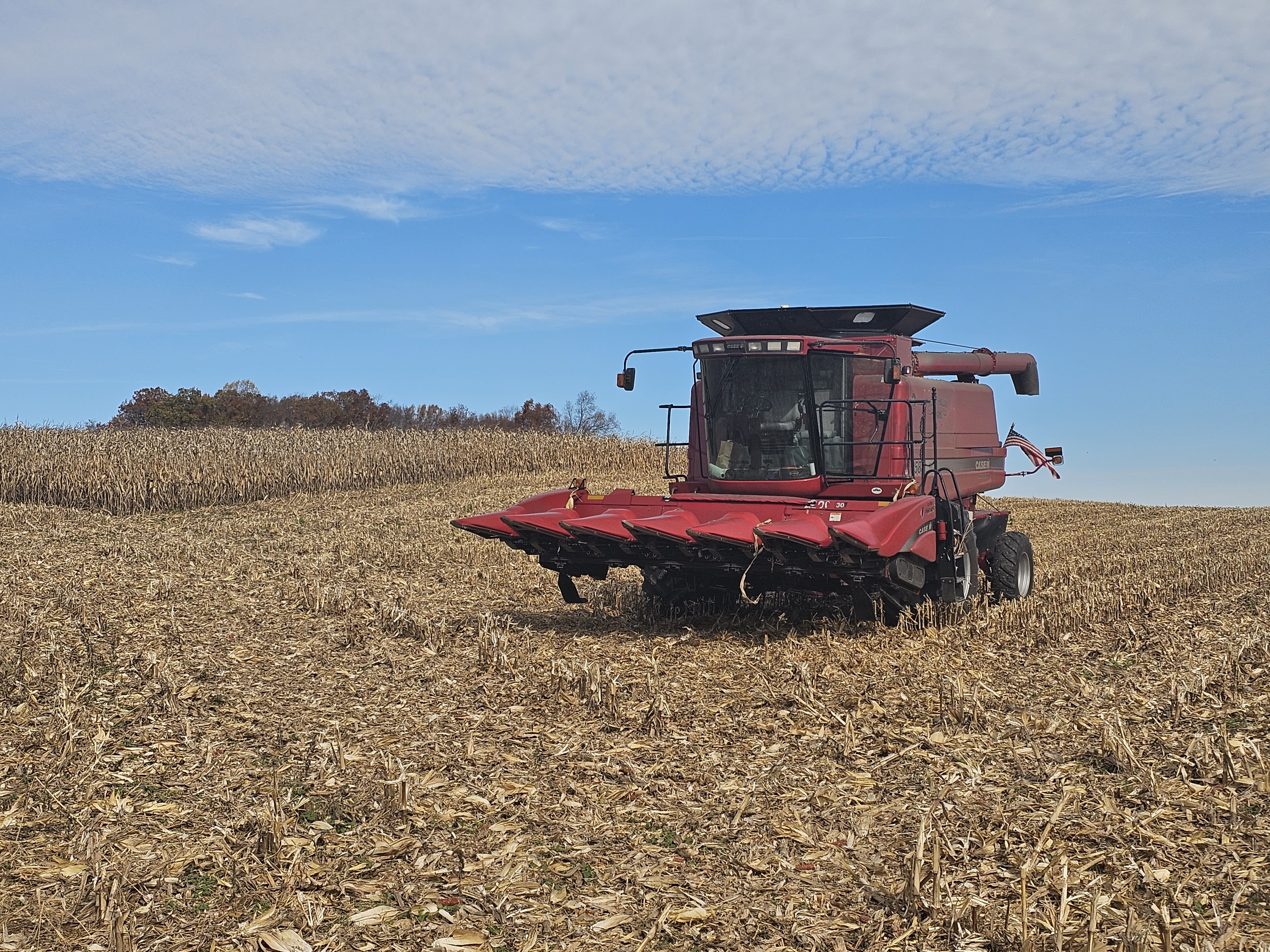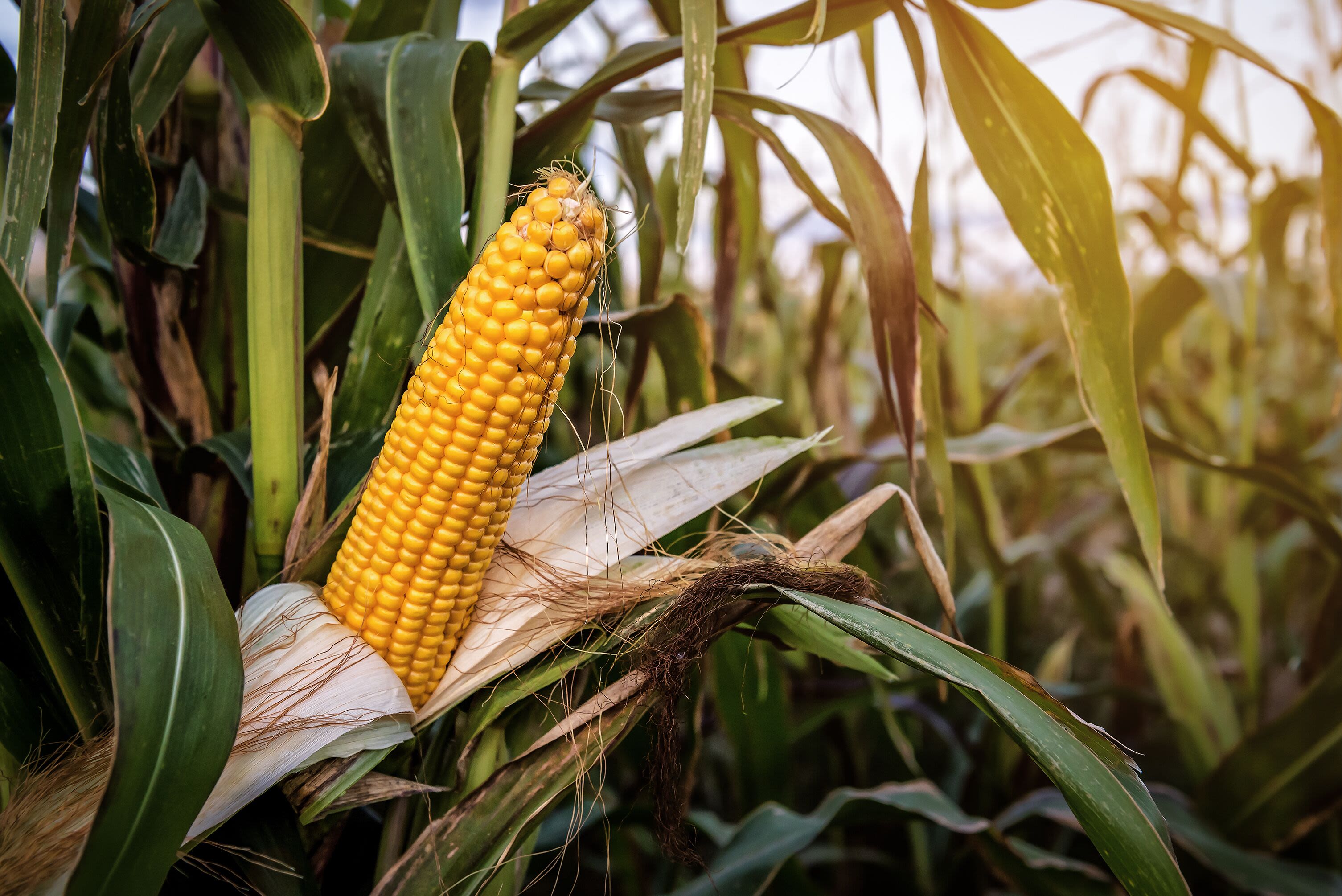Breaking ground
How a Maryland farmer is doubling soybean yields

In the gently rolling hills of central Maryland on the U.S. east coast, where generations of farmers have coaxed modest harvests from loam soil, Chris Weaver is defying agricultural conventions. On his 1,000-acre operation growing corn and soybeans, this sixth-generation farmer is shattering what farmers long considered the ceiling for average soybean production over multiple seasons.
While neighboring farms typically harvest 50-55 bushels per acre—the USDA average for the region—Weaver's yields have soared to 160 bushels per acre on non-irrigated land, more than triple the regional average. Even more remarkably, his operation consistently maintains yields above 120 bushels across vast acreage, making him a valuable contributor to Maryland’s $200 million soybean industry.
"I am disappointed when I see that monitor hit below 100," Weaver says, revealing both his competitive spirit and the higher baseline that now defines success on his farm. "I feel like I didn't win."
Path to higher yields
Weaver’s journey to exceptional yields began with questioning conventional wisdom about soybean farming after studying agriculture at university. His innovative approach wasn’t immediately embraced - even his father was skeptical. “When we started, I think my dad thought I had lost my mind,” Weaver recalls with a laugh. “But throughout the years, I’ve proven to him that this is profitable. We can produce more on less acres today.”
His success isn't the result of a single breakthrough but rather a comprehensive reimagining of soybean cultivation, built on three pillars: meticulous soil management, data-driven experimentation, and strategic partnerships with agricultural innovators like Syngenta.
Working closely with Syngenta’s agronomists, Weaver has developed a sophisticated soil management program that treats the earth as a living ecosystem rather than merely a growing medium. “We’ve eliminated ground compaction. We’ve increased the microbes. We’ve increased earthworm movement.”
This attention to underground life has created a resilient growing environment that better withstands environmental stresses. The results of this approach became apparent during the summer. "We went through nine weeks with no rain," Weaver notes. "But our calcium levels are so high and so good that we don't see the drought for the first couple weeks like my neighbors do."

Research-driven results
What truly sets Weaver apart is his commitment to rigorous, in-house research. Skeptical of vendor claims promising miracle yields, he has transformed his farm into a living laboratory where agricultural innovations are put to the test.
“Some vendors promised a 3–5-bushel bump in yield. Well, if I just use their product, I should be growing 250-bushel beans," he says with a hint of skepticism. "What I found out is there's a lot of smoke and mirrors in sales. I wanted to separate fact and fiction—what really does work, what doesn't work?”
This dedication to ground-truth testing has led Weaver to develop his own research program. “I want to control it all in-house,” he explains. “We’re checking spots. We don’t go to the good spots in the field, we go to the bad spots first and ask, why are they bad? What can we make better?”
This scientific approach extends to every aspect of his operation. Weaver conducts regular tissue sampling and maintains extensive data collection, including monitoring brix levels and soil compaction. He uses drone mapping to identify problem areas and GPS-guided tractors with variable-rate technology for precise seed and fertilizer application. Weaver is also particular about seed selection, choosing varieties based on consistency rather than peak performance.
Research-driven results
What truly sets Weaver apart is his commitment to rigorous, in-house research. Skeptical of vendor claims promising miracle yields, he has transformed his farm into a living laboratory where agricultural innovations are put to the test.
“Some vendors promised a 3–5-bushel bump in yield. Well, if I just use their product, I should be growing 250-bushel beans," he says with a hint of skepticism. "What I found out is there's a lot of smoke and mirrors in sales. I wanted to separate fact and fiction—what really does work, what doesn't work?”
This dedication to ground-truth testing has led Weaver to develop his own research program. “I want to control it all in-house,” he explains. “We’re checking spots. We don’t go to the good spots in the field, we go to the bad spots first and ask, why are they bad? What can we make better?”
This scientific approach extends to every aspect of his operation. Weaver conducts regular tissue sampling and maintains extensive data collection, including monitoring brix levels and soil compaction. He uses drone mapping to identify problem areas and GPS-guided tractors with variable-rate technology for precise seed and fertilizer application. Weaver is also particular about seed selection, choosing varieties based on consistency rather than peak performance.
Chris Weaver has transformed his farm into a living laboratory where agricultural innovations are put to the test.
Chris Weaver has transformed his farm into a living laboratory where agricultural innovations are put to the test.
Strategic seed management
One example of Weaver’s methodical approach is his field-specific seed variety selection. “We might plant 14-15 different types of soybean varieties,” he explains. “We are picking the variety for the field. That might mean per farm we might clean out the planter maybe three or four times.”
This attention to detail extends to seed treatment, where his experience with Syngenta’s products led to an important discovery. It all started with Saltro, a fungicide seed treatment developed by Syngenta to protect soybeans from diseases such as Sudden Death Syndrome and from the soybean cyst nematode without causing the plant stress.
This crimper is used to break down corn and soybean fodder to encourage decaying and in turn put nutrients back into the soil.
This crimper is used to break down corn and soybean fodder to encourage decaying and in turn put nutrients back into the soil.
“We were using a competitive brand for years,” Weaver notes, “but I was noticing that our yield was decreasing. That’s where somebody said, ‘Hey, have you looked at Saltro?’ Now I am a huge Saltro user. We get the benefits of the fungicide without any yield reduction.”
Industry partnership
Weaver’s success has been amplified through his collaboration with Syngenta’s Golden Harvest team. “Chris has been a partner with us for a few years now,” says Curtis Bowling, District Manager - Ohio and Northeast US at Golden Harvest Seeds. “He puts a lot of emphasis on growing high-yield soybeans, not only from a fertility standpoint, but also from a nutrition and genetics perspective. He treats every acre as if it's a high management acre.”
This partnership is built on Syngenta’s 50-year history of continuous breeding and genetic advancement. “We’ve maintained that conventional breeding platform all those years,” explains Kramer Farney, Head, GHX Marketing, Syngenta. “Our approach always puts yield and agronomics first. We’re starting with what actually matters and what drives farmers’ profitability.”
The company’s commitment to innovation is evident in their $400 million investment in North American seed business since 2017. Farmers like Weaver can choose from advanced soybean varieties that offer flexible and effective weed management options through their tolerance to multiple herbicides.
Collaborating with Syngenta is helping Weaver adapt to changing weather patterns, which have become more pronounced over the last decade. “Growing up, we used to have consistent weekly rains here. Now intense bursts are more common, followed by weeks without any rain. Summers are a lot hotter while winters are milder,” Weaver says.
“We work with farmers and advisors to help determine the best placement of soybeans based on weather conditions,” Farney explains. “We also have a soybean line up that can withstand various situations. For example, some soybean varieties are better suited for heavier, wetter soil that doesn’t drain well, while other varieties are better for soil that needs to withstand drought conditions.”

Looking forward
As climate pressures mount and global food demand rises, Weaver's methods offer a blueprint for high-yield, sustainable agriculture. His message to fellow farmers is straightforward: “The best thing every farmer can do is have their own research plots on their farm and be willing to change and think out of the box.”
This philosophy, combined with Syngenta’s continued investment in genetic advancement and new trait development, points to an exciting future for soybean farming. As Farney notes: “We have some really exciting things coming down the pipeline that farmers are going to see a lot of value in.”
Through the combination of innovative farming practices and cutting-edge plant genetics, Weaver is showing what’s possible in modern soybean production. With unpredictable weather and fluctuating market prices presenting new challenges, his focus remains on soil health and selecting resilient varieties that can maintain consistent yields even in tough conditions - and setting new standards for what farmers can achieve.






